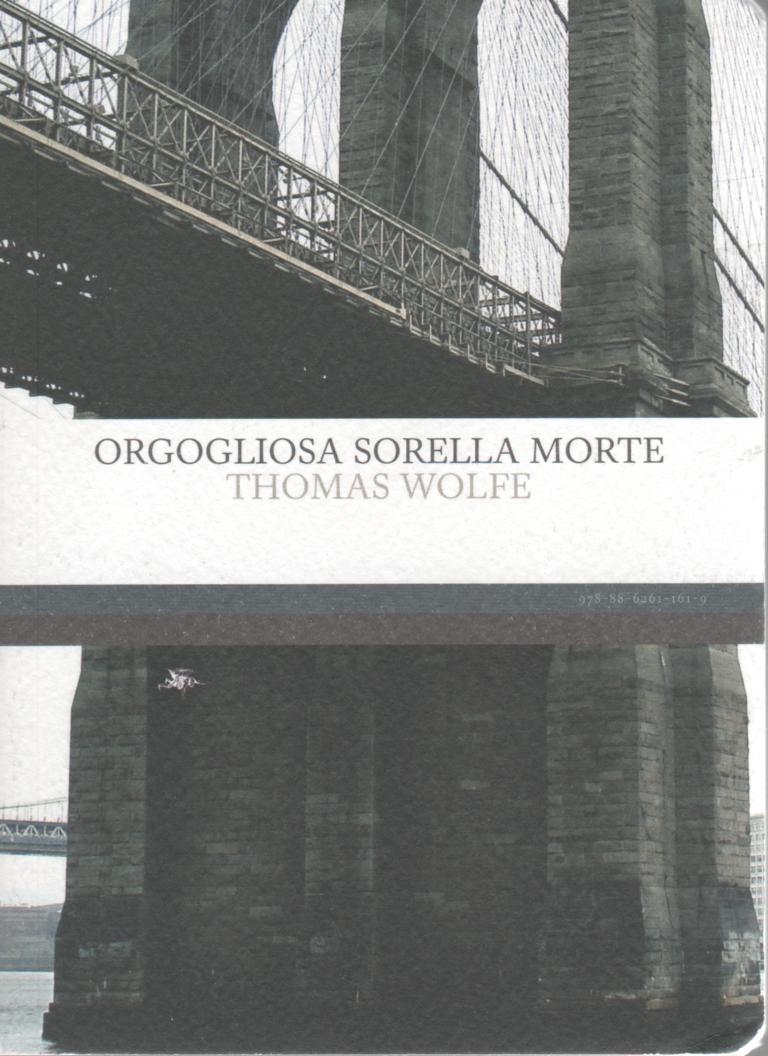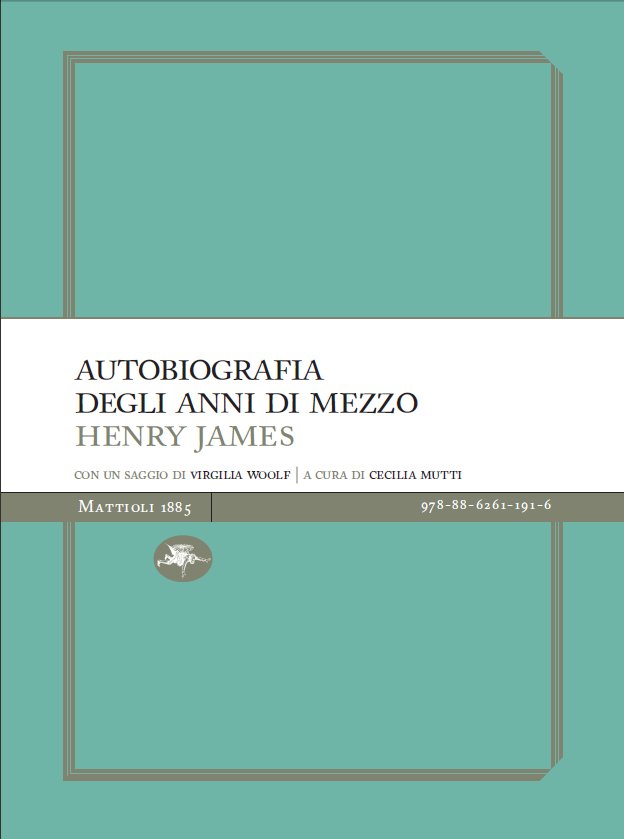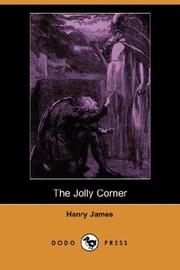 Nel suo Critica della democrazia occidentale, l’antropologo anarchico David Graeber ricorda che le comunità dei pirati atlantici nel XVIII secolo furono per certi versi una formulazione precoce di quelle che oggi ci piace definire, a volte solo formalmente, come democrazie occidentali: “Era lo spazio perfetto per un esperimento interculturale. Di fatto, non c’era a quel tempo in tutto l’Atlantico un terreno più adatto per impiantare nuove istituzioni democratiche” (elèuthera 2012, p. 81). Non sorprende quindi che un libertario autorevole e consapevole come William Burroughs si sia ispirato alla vicenda, peraltro storica e accuratamente ricostruita nella nota biografica conclusiva, del “pirata filosofo” Mission, fondatore in Madagascar della libera colonia di Libertatia. Burroughs preferisce l’Oceano Indiano all’Atlantico, il Madagascar ai Caraibi. Ci sono brani bellissimi sulla “grande isola rossa”:
Nel suo Critica della democrazia occidentale, l’antropologo anarchico David Graeber ricorda che le comunità dei pirati atlantici nel XVIII secolo furono per certi versi una formulazione precoce di quelle che oggi ci piace definire, a volte solo formalmente, come democrazie occidentali: “Era lo spazio perfetto per un esperimento interculturale. Di fatto, non c’era a quel tempo in tutto l’Atlantico un terreno più adatto per impiantare nuove istituzioni democratiche” (elèuthera 2012, p. 81). Non sorprende quindi che un libertario autorevole e consapevole come William Burroughs si sia ispirato alla vicenda, peraltro storica e accuratamente ricostruita nella nota biografica conclusiva, del “pirata filosofo” Mission, fondatore in Madagascar della libera colonia di Libertatia. Burroughs preferisce l’Oceano Indiano all’Atlantico, il Madagascar ai Caraibi. Ci sono brani bellissimi sulla “grande isola rossa”:
Quando era attaccato al continente africano, il Madagascar sporgeva come un tumore disordinato, percorso da una spaccatura, il contorno dell’isola futura, […] simile a una grande incisione, alla fessura che divide il corpo umano. La spaccatura era larga un miglio in alcuni punti, in altri si restringeva a un centinaio di metri. Era una zona di cambiamento e di contrasto esplosivo, percorsa da violente tempeste elettriche, incredibilmente fertile in alcuni punti, completamente sterile in altri.
L’esperimento di Libertatia “minacciava di dimostrare che era possibile per trecento anime coesistere in relativa armonia tra di loro, con i vicini e con l’ecosfera di flora e fauna”. Tra gli Articoli stabiliti da Mission, uno vieta l’uccisione dei lemuri, pena l’espulsione dalla colonia. E, fatalmente, il romanzo si apre con la morte violenta di un lemure, che è anche un atto d’insurrezione politica.
Ma invece di curarsi della minaccia più o meno imminente, o forse proprio per comprenderla a fondo, Mission decide di cercare una droga. Il suo ragionamento è impeccabile e perfettamente burroughsiano: in un’isola piena di specie endemiche, deve esistere una droga tipica del luogo. Scopre che esiste e che si chiama indri, ovvero “guarda bene”. Mission la prende ed inizia a vedere. Capisce che il tempio di pietra abbandonato nel cuore della foresta, verso il quale prova una profonda fascinazione, è in verità “l’entrata al biologico Giardino delle Occasioni Perdute”.
In The Cat Inside (ovvero Il gatto in noi, pubblicato sempre da Adelphi) Burroughs descrive il gatto, creatura delicata, misteriosa e magica, come suo compagno psichico, di cui si considera Guardiano: creatore e custode di un’ibridazione tra umano, animale e un che di «ancora inimmaginabile». E dal punto di vista letterario il passo è breve dai gatti ai lemuri, che figurativamente sembrano l’anello di congiunzione tra i primati, uomo incluso, e altri animali più ferini e primitivi. Mission ne tiene in casa uno, che chiama Fantasma. E già nella prima pagina del libro Burroughs si premura di spiegare che nella lingua locale è il termine stesso lemure a significare “fantasma”. Ed è forse il caso di ricordare a questo punto che il titolo originale è Ghost of Chance, che nella sua indeterminatezza potrebbe significare “spettro della sorte” ma anche “(l’) ombra di (un’) opportunità” (la febbre del ragno rosso nel libro c’è ma è secondaria, e credo sia stata scelta principalmente perché ad Adelphi torna comodo avere un colore nel titolo).
Il libro è un’elegia alle occasioni perdute; non solo biologiche ma anche politiche, verrebbe da dire. Perché, come mostra la prosa onirica di Burroughs, le due questioni sono connesse. Staccandosi dal continente, centosessanta milioni di anni fa, il Madagascar ha creato delle condizioni uniche, un ambiente privo di predatori e adatto al Popolo dei Lemuri, il cui “modo di pensare è fondamentalmente diverso dal nostro, non orientato verso il tempo, la sequenza e la causalità”.
“Hanno il pollice opponibile ma non fabbricano strumenti; non hanno bisogno di strumenti. Sono indenni dal male che riempie l’Homo Sapiens quando afferra un’arma—ora è lui ad avere il sopravvento. Una terribile sensazione di trionfo viene dalla consapevolezza di essere il più forte. La bellezza è sempre destinata alla sconfitta”.
Ed ecco la metafora, la sintesi poetica:
“C’è una spaccatura dentro l’organismo umano, la spaccatura o fessura tra i due emisferi, quindi ogni tentativo di sintesi resta irrealizzabile in termini umani. Faccio un parallelo tra questa fessura che divide le due parti del corpo umano e la spaccatura che ha separato il Madagascar dal continente africano. Una parte è scivolata dentro un’incantata innocenza senza tempo. L’altra si è avviata inesorabilmente verso il linguaggio, il tempo, l’uso di strumenti, la guerra, lo sfruttamento e la schiavitù”.
La prosa di Burroughs è costellata di simili illuminazioni. A volte apparentemente sconnesse, e in realtà portatrici di una verità più profonda. E d’altro canto non c’è, semplicemente, un altro scrittore che sappia illustrare con altrettanta efficacia gli effetti delle droghe: lo spostamento di prospettiva (“come se i suoi occhi si muovessero su cardini diversi”) e il turbine di immagini dotate di una propria logica. Probabilmente non c’è, semplicemente, un altro scrittore che abbia sperimentato con altrettanta metodicità tutte le droghe mai create. E sia sopravvissuto per scriverne.
La narrazione a volte sembra prendere direzioni del tutto inattese, come nelle pagine bellissime, esilaranti e profondamente vere sull’ipocrisia di Gesù; il punto, come credo di aver dimostrato, è che questo libro va citato più che recensito, perché le mie parole non saranno mai efficaci quanto le immagini evocate dall’autore. E anche solo quella dei lemuri, creature delicate, dolci e indifese, destinate alla sconfitta, varrebbe il costo del biglietto — del trip.
“Non era sicuro di voler vedere quello che gli avrebbe mostrato l’indri; sapeva già che sarebbe stato insopportabilmente triste”.
Prenderete anche voi l’indri?
William Burroughs
La febbre del ragno rosso (1991)
traduzione di Marisa Caramella
pp. 71, €8
Einaudi, 1996
Giudizio: 4/5.
 La trevigiana Santi Quaranta si è sempre distinta per la cura e l’eleganza delle sue pubblicazioni: quanto promesso dai cataloghi stampati su carta filigranata viene mantenuto dalle belle copertine su carta ruvida, dai risvolti di copertina, dalle rilegature a filo. Altrettanto caratteristico è il legame con la realtà locale, a partire dal nome dell’editrice (ispirato ad una delle porte monumentali cittadine) fino all’attenzione dedicata agli autori veneti, friulani, giuliani, istriani. D’altro canto l’editore, Ferruccio Mazzariol, mio vicino di casa, pare destinato al local color già dall’anagrafe: nel folklore delle nostre terre il mazzariol è un folletto dei boschi, protagonista di aneddoti raccontati in dialetto—o meglio in lingua veneta, come dice il Mazzariol (l’editore, non il folletto):
La trevigiana Santi Quaranta si è sempre distinta per la cura e l’eleganza delle sue pubblicazioni: quanto promesso dai cataloghi stampati su carta filigranata viene mantenuto dalle belle copertine su carta ruvida, dai risvolti di copertina, dalle rilegature a filo. Altrettanto caratteristico è il legame con la realtà locale, a partire dal nome dell’editrice (ispirato ad una delle porte monumentali cittadine) fino all’attenzione dedicata agli autori veneti, friulani, giuliani, istriani. D’altro canto l’editore, Ferruccio Mazzariol, mio vicino di casa, pare destinato al local color già dall’anagrafe: nel folklore delle nostre terre il mazzariol è un folletto dei boschi, protagonista di aneddoti raccontati in dialetto—o meglio in lingua veneta, come dice il Mazzariol (l’editore, non il folletto): “Night and day, wind and storm, tide and earthquake, impeded man no longer. He had harnessed Leviathan”.
“Night and day, wind and storm, tide and earthquake, impeded man no longer. He had harnessed Leviathan”. Random notes I took shortly after reading the book.
Random notes I took shortly after reading the book. “Giù in città avevo già visto la morte in faccia tre volte, e quella primavera stavo per incontrarla di nuovo”.
“Giù in città avevo già visto la morte in faccia tre volte, e quella primavera stavo per incontrarla di nuovo”. “Era quella un’epoca baffuta”.
“Era quella un’epoca baffuta”. Il soprannaturale jamesiano.
Il soprannaturale jamesiano. Henry James’ last ghost story, and his finest since The Turn of the Screw, is also his final meditation on some of his most personal concerns: the international theme, the American who goes back after a long period spent in the Old World, and his impressions of a rapidly changing country that at the turn of the century was rising to the role of world power.
Henry James’ last ghost story, and his finest since The Turn of the Screw, is also his final meditation on some of his most personal concerns: the international theme, the American who goes back after a long period spent in the Old World, and his impressions of a rapidly changing country that at the turn of the century was rising to the role of world power. Jamesian studies in my department were so strong that three courses of my curriculum dealt with Henry James, of which one was monographic and a second analyzed American history and institutions through the works of the James Bros. (I shan’t dwell). As a consequence I developed a barely-concealed and strong dislike for the novelist. On the other hand, years afterwards I still maintain a fond memory of his short stories.
Jamesian studies in my department were so strong that three courses of my curriculum dealt with Henry James, of which one was monographic and a second analyzed American history and institutions through the works of the James Bros. (I shan’t dwell). As a consequence I developed a barely-concealed and strong dislike for the novelist. On the other hand, years afterwards I still maintain a fond memory of his short stories. ‘A most wonderful, lurid, poisonous little tale’.
‘A most wonderful, lurid, poisonous little tale’. Nel suo Critica della democrazia occidentale, l’antropologo anarchico David Graeber ricorda che le comunità dei pirati atlantici nel XVIII secolo furono per certi versi una formulazione precoce di quelle che oggi ci piace definire, a volte solo formalmente, come democrazie occidentali: “Era lo spazio perfetto per un esperimento interculturale. Di fatto, non c’era a quel tempo in tutto l’Atlantico un terreno più adatto per impiantare nuove istituzioni democratiche” (elèuthera 2012, p. 81). Non sorprende quindi che un libertario autorevole e consapevole come William Burroughs si sia ispirato alla vicenda, peraltro storica e accuratamente ricostruita nella nota biografica conclusiva, del “pirata filosofo” Mission, fondatore in Madagascar della libera colonia di Libertatia. Burroughs preferisce l’Oceano Indiano all’Atlantico, il Madagascar ai Caraibi. Ci sono brani bellissimi sulla “grande isola rossa”:
Nel suo Critica della democrazia occidentale, l’antropologo anarchico David Graeber ricorda che le comunità dei pirati atlantici nel XVIII secolo furono per certi versi una formulazione precoce di quelle che oggi ci piace definire, a volte solo formalmente, come democrazie occidentali: “Era lo spazio perfetto per un esperimento interculturale. Di fatto, non c’era a quel tempo in tutto l’Atlantico un terreno più adatto per impiantare nuove istituzioni democratiche” (elèuthera 2012, p. 81). Non sorprende quindi che un libertario autorevole e consapevole come William Burroughs si sia ispirato alla vicenda, peraltro storica e accuratamente ricostruita nella nota biografica conclusiva, del “pirata filosofo” Mission, fondatore in Madagascar della libera colonia di Libertatia. Burroughs preferisce l’Oceano Indiano all’Atlantico, il Madagascar ai Caraibi. Ci sono brani bellissimi sulla “grande isola rossa”:
Il veneziano è una grande lingua perché è stato largamente usato nei documenti ufficiali della Repubblica Veneta, perché è stato unanimemente parlato dal popolo e dalla classe nobile fino ai nostri giorni, perché è un idioma che ha trovato espressione in rilevanti e ricchissimi materiali e forme letterarie: dalla storiografia al grandioso fenomeno del teatro veneto, dalla poesia alla novellistica.
Questo libro è il primo di una nuova collana di testi in veneto, chiamata suggestivamente el portego: “el portego è, nelle nostre bellissime città e cittadine murate, luogo d’incontro, di passeggio, dimora mobile del ciacolar, riparo dalle intemperie”. Luogo in cui la lingua è presente e viva. Nell’ottica di “una riproposizione del veneziano fatta in maniera prestigiosa e creativa, radicalmente lontana dalla retorica e dal velleitarismo leghista”, quale sfida più ardua ed elettrizzante del tradurre i sonetti di Shakespeare nella lingua che fu di Goldoni?
La traduttrice, veneziana di nascita e residente a Treviso, dove affianca l’attività poetica a quella giornalistica, racconta nella Nota introduttiva di aver inizialmente tradotto Shakespeare in veneziano nell’ambito di una raccolta pubblicata in occasione dei quattrocento anni dei sonetti; di aver successivamente, incitata dall’apprezzamento degli amici poeti, proseguito nell’opera, “lavando i panni in Canalazzo” e consultando la letteratura in veneziano, il Dizionario del Dialetto Veneziano di Giuseppe Boerio, la Grafia Veneta Unitaria pubblicata dalla Giunta Regionale del Veneto nel 1995, e non da ultimo i Lepschy. Il suo è un veneziano matrilineare ed “esente da innesti di terraferma” (benissimo, purché non sia alla vicentina!). E d’altro canto tra isolani, quali sono inglesi e veneziani, ci s’intende.
Il risultato è, mi si passi l’ossimoro, prevedibilmente sorprendente. Il veneziano, nota la Panfido, è “ricco di monosillabi, bisillabi e parole tronche” che permettono una corrispondenza metrica e prosodica con l’originale irraggiungibile in italiano (e personalmente approvo di cuore la scelta intelligente di non mantenere le rime anche nella lingua d’arrivo). E se è vero che si tratta di una “lingua pragmatica, radicata nel mondo mercantile e [che] rifugge dall’astrazione, preferendo alle idee le cose” —apparentemente inadeguata quindi a trasmettere il linguaggio degli affetti, non scevro da una certa concettosità, così centrale nella poetica shakespeariana— alcune corrispondenze sono davvero stupefacenti: dalle piccole cose, come la trasposizione di trifle con strafanto o di buds con buti (un calco semantico perfetto), fino ai concetti più alti, come la bragging death che diventa morte smargiassa. Inoltre è piacevolmente spiazzante riscoprire nel veneziano una lingua al contempo elegante e verace, liquida come i canali e concreta ma leggiadra come i marmi traforati.
Nella postfazione Marco Paolini ricorda che “l’ideale destinatario del sonetto è una persona sola, a cui viene dalla voce dedicato”; ma da uomo di teatro qual è sottolinea anche la “musica struggente che slarga e strassina con sé” di questa traduzione, a cui non si può che dare voce, restituendo vita e “facendo cantare” parole ormai dimenticate.
I sonetti tradotti sono i seguenti, per un totale di trentatre: 2, 12, 18, 20, 22, 27, 33, 42, 44, 47, 48, 50, 53, 57, 60, 63, 65, 71, 73, 75, 89, 93, 99, 104, 113, 116, 119, 124, 130, 139, 143, 144, 147.